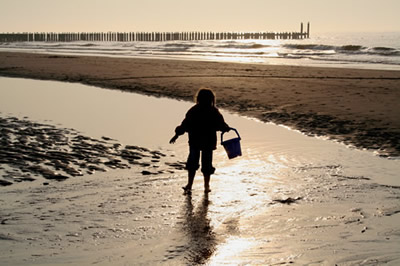Carbon is naturally exchanged back and forth between the sea and atmosphere, with the oceans as a net carbon sink. Approximately half of all anthropogenic carbon dioxide produced since the industrial revolution has been absorbed and sequestered by the oceans. Work through "The Ocean Cycle" in the Carbon Cycle learning tool to answer a few questions about the ocean's involvement in the global carbon cycle.
- How many gigatonnes of carbon are exchanged back and forth between the atmosphere and the ocean each year?
- What is one problem associated with increased carbon in our oceans?

Enormous amounts of carbon are stored in the oceans in the form of dissolved carbon dioxide and in marine creatures. The addition of carbon to these ecosystems could drastically affect marine life, as these creatures are extremely sensitive to rapid environmental change due to their interconnected food networks, symbioses, and other relationships. Humanity is also very dependant on marine life as much of the oxygen we breathe has oceanic origins, produced by marine photosynthesizers such as phytoplankton and various species of bacteria. In addition, humans rely on marine ecosystems for their livelihood, nourishment, and overall economic stability. Therefore, if these ecosystems are forced out of balance by large increases in oceanic carbon, marine species will suffer and so will we.